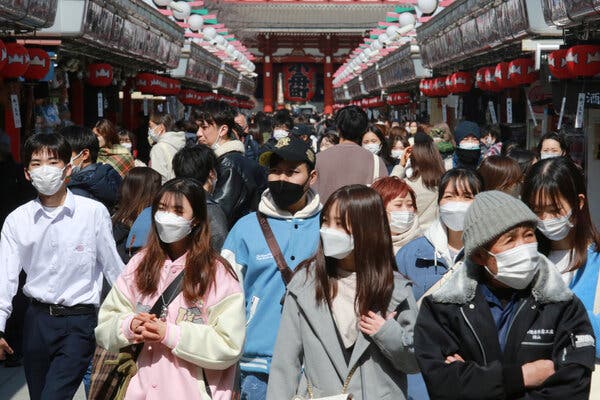The once severe Omicron wave that has retreated in much of the world is still flaring up in parts of East and Southeast Asia, where caseloads are rising and some countries are enduring their worst waves of the pandemic, the World Health Organization noted this week.
Many places in the region had kept caseloads fairly low throughout the pandemic because of their strict policies, including “zero Covid” approaches in mainland China and Hong Kong, as well as in New Zealand.
But the Omicron surge has worsened in parts of Asia since December — including in Japan, South Korea and Vietnam — and in Pacific island countries like New Zealand and Tonga. Tonga recorded its first community transmission of the coronavirus last month after aid workers came to help the island nation recover from a volcanic eruption and a subsequent tsunami.
Coronavirus policies in parts of Asia have generally been far stricter than in the Americas. Some countries in the Americas have eased those policies even further in the past few weeks as Omicron cases have dropped, a move that W.H.O. officials said on Wednesday was happening too soon.
The United States, along with Brazil, Germany, Indonesia, Japan and Russia, reported high death counts from Feb. 28 to Sunday, the agency said. Germany and Russia were still reporting high caseloads — although the agency reported on Tuesday that new cases and deaths had slowed worldwide during that time period.
Last month, the agency said that a more contagious Omicron subvariant had been spreading quickly and had become dominant in Denmark and in several Asian countries, including Bangladesh, China, India, Pakistan and the Philippines. But on Tuesday the agency said that the predominant Omicron subvariant still accounted for slightly more cases globally. Some scientists had been concerned that the more contagious variant’s greater transmissibility could cause a fresh spike or prolong the Omicron wave.
Scientists had also wondered whether people infected with one Omicron subvariant could be reinfected with another. The W.H.O. reported that recent data from Qatar suggested that a previous infection with one Omicron subvariant may confer protection against others.
The agency said it had received reports of clusters of what it called recombinant variants, or variants that combined Delta and Omicron or different Omicron subvariants. But because such clusters have showed “very low to almost undetectable levels of transmission,” those variants have not been named.


























